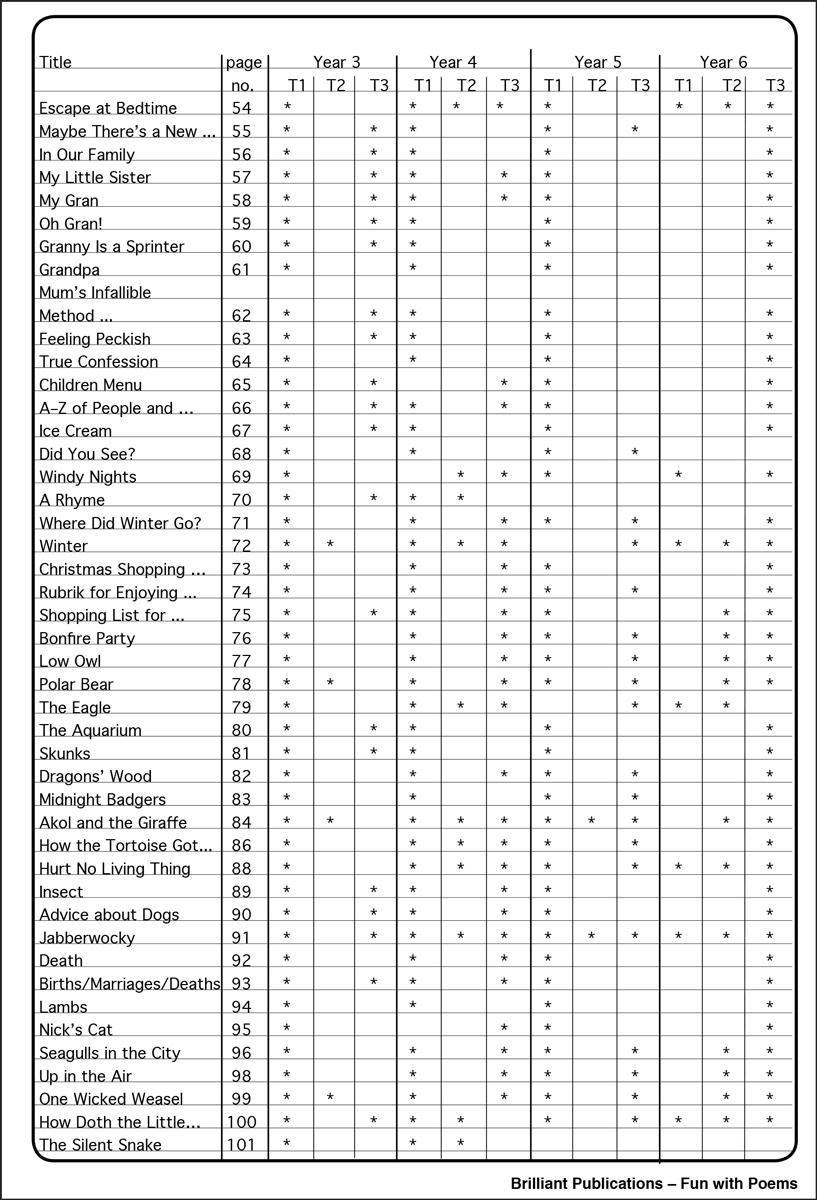Description
Poetry stirs the soul and stimulates the mind with words and sounds to bring pleasure. A love of poetry is a great gift because it enriches our lives by making sense of the most incredible events, hopes, dreams and feelings. It inspires a fascination for words – words which take us from tears to laughter, from grief to joy, from misapprehension to understanding.
Teaching poetry is about developing enjoyment and response: it is about stimulating pupils towards considered response and towards thinking about how words may be put together to create effect; it is about leading pupils to write poems that have a clear message and meaning for others.
The poem themes are designed to fit into the NLS spectrum:
Year 3/ Term 1 – Poems based on observation and senses, shape poems.
Year 3/ Term 2 – Oral and performance poetry from different cultures.
Year 3/ Term 3 – Humorous poetry, poetry that plays with language, word puzzles, puns, riddles.
Year 4/ Term 1 – Common themes – for example: school, animals, families, feelings, viewpoints, etc.
Year 4/ Term 2 – Classic and modern poetry, including poems from different cultures and times.
Year 4/ Term 3 – Range of poetry in different forms – poems that have interesting and unusual forms to examine with the children – see each poemʼs individual notes for more information about its form.
Year 5/ Term 1 – Poems by significant childrenʼs writers, concrete poetry. All the poets in this book (other than the traditional ones) are writing and contributing regularly to contemporary anthologies of all kinds, and therefore can be considered to be ʻsignificant poetsʼ.
Year 5/ Term 2 – Longer classic poetry including narrative poetry.
Year 5/ Term 3 – Poems from a variety of cultures and traditions, choral and performance poetry.
Year 6/ Term 1 – Classic poetry by long-established poets.Year 6/ Term 2 – Range of poetic forms.
Year 6/ Term 3 – Work by same poet for comparison and work based on same theme for comparison.























Reviews
There are no reviews yet.